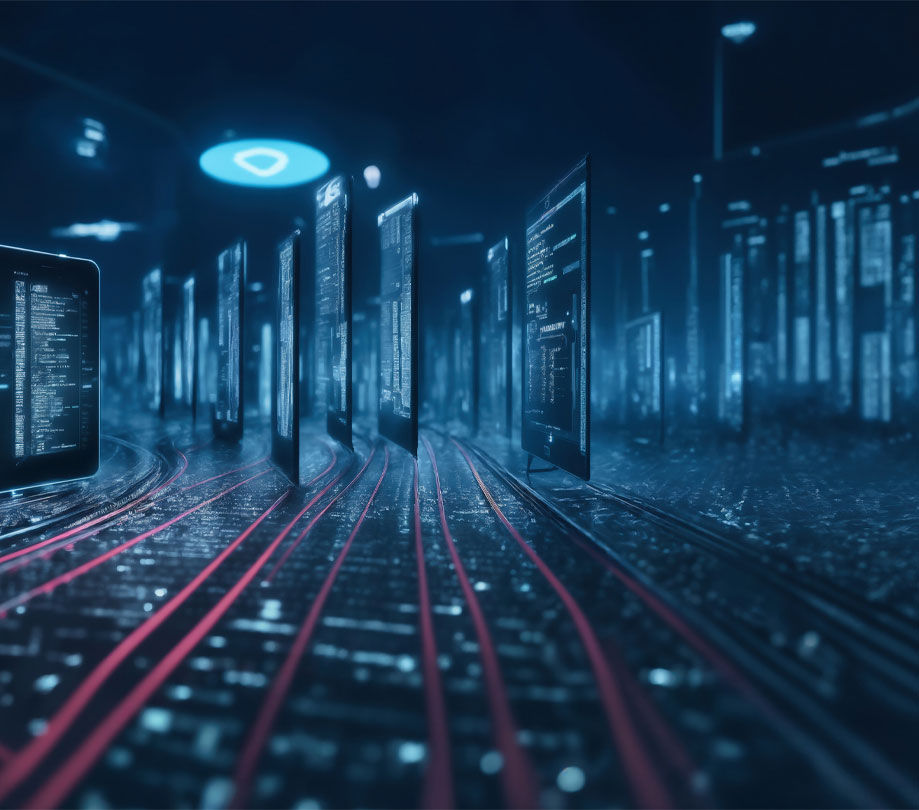Quali Tells Us What the Coolest Thing About Sandboxing Is
Friday, August 12, 2016

|
Richard Harris |
Getting good quality software to the market fast is a big challenge, so we recently sat down with Joan Wrabetz, CTO of Quali to chat about Cloud Sandboxing, Community and the Hottest New Release for Full-Stack Application Environments.
ADM: Tell me a little about Quali?
Wrabetz: Quali is the leading provider of Cloud Sandboxes for automating the DevOps lifecycle. We give innovators control over their world by enabling them to create personalized replicas of even the most complex production environments. The Global 100 and beyond including public cloud providers, service providers and Enterprises depend on Quali to help them deliver their products and services to market faster with better quality and reduced costs.
ADM: What’s the coolest thing about a sandbox?
Wrabetz: We are continuously working to enable our customers to reproduce even the most complex infrastructure - from datacenter to public and hybrid clouds - in a sandbox. Our new application support also means that customers can automate the creation of a full stack environment from network to applications for all of their DevOps activities.
ADM: You have a new release of your product now, what is its purpose?
Wrabetz: Quali CloudShell continues to get adopted globally and is the world’s leading cloud sandbox software. Our newest release is Quali CloudShell 7.0. In addition to infrastructure-based sandboxes, we’ve now extended the ability to add applications. So now it helps businesses deliver applications faster with public, private, and hybrid cloud support and powerful sandboxing features. The ability to perform full-stack application blueprinting is powerful.
With this new capability developers can now create application templates that can be deployed within sandboxes and which remain agnostic of where the application runs – whether datacenter, public or private cloud. Application stacks can be easily created and added to sandboxes without having to code, allowing rapid design and deployment of complex sandbox environments. CloudShell provides out of the box support for VMWare vCenter as well as support for AWS, OpenStack, and Docker via the Quali community with Azure support forthcoming in a future release. In addition, advanced VLAN features make it easier to connect virtual and physical endpoints seamlessly – a capability that has been a huge differentiator for us.
ADM: You mentioned the community. Could you share what you’re doing to get more developers engaged?
Wrabetz: The Quali Developer Community was launched a few months ago to enable our customers and partners to share CloudShell components called “Shells” and we’ve been seeing good traction. It has been expanded to include new standards for Shells, which are the building blocks of Sandboxes. The standards include sample code, templates and guidelines for creating new Shells, allowing rapid integrations with heterogeneous infrastructure and accelerating time to market. In addition, by leveraging a broad set of tool, cloud, and infrastructure integrations, the new Shell standards make it easy for developers to create and share Shells within the developer community. So facilitate this objective, we are also providing a free Software Developer’s Kit (SDK) for any developers who are working to contribute their developments.
Our goal is to have customers and developers leverage the SDK and build shells and contribute it back to the community. They also get to share best practices amongst their peers. Developers and Quali customers can access the community tab on our website. They can also provide ideas on the direction they want to take the product into. This is a knowledge sharing economy and we’d love to engage with our users real-time.
ADM: What else is new with the 7.0 release?
Wrabetz: With the 7.0 release, Quali’s Shells become Python-based and open sourced via GitHub as well. This gives Python programmers complete support to rapidly build, modify and extend Shells. Using Python and CloudShell’s object-based modelling rather than just scripts, developers can create more robust and reusable Shell integrations that include custom orchestration commands and metadata such as prerequisites, attributes, and policy data. Of course all of this complements what can be accomplished with the Quali CloudShell user interface.
ADM: Did you change your API for this new release?
Wrabetz: Yes. Quali CloudShell 7.0 features a new Sandbox API along with the Python API, enabling integration with DevOps tools like Jenkins and Jira, allowing sandboxes to be used in a fully automated DevOps workflow. In this way, CloudShell allows organizations to create full continuous integration and deployment processes that automate complex, hybrid, production-like sandbox environments.
ADM: What is the buzz around the analyst community around your product?
Wrabetz: William Fellows, Research Vice President of 451Research took a close look at Quali’s offering. In fact, he noted that in today's application economy, every business is a software company, and Quali's support for full stack automation from applications to infrastructure to hybrid cloud in sandboxes is essential for speeding application delivery and really giving businesses a significant competitive advantage.
ADM: Is DevOps just for developing for the cloud?
We often hear about DevOps in conjunction with war stories about companies like Google and Netflix. So it isn’t surprising that people would ask whether DevOps methods are best achieved with cloud based applications.
Wrabetz: Several enterprises are continuing to embrace the best practices from Google and Netflix especially as they bring in as-a-service methodologies to optimize their own IT environments. But, the answer is no, DevOps is not just for cloud applications. This methodology and its predecessor approach called Lean, actually derive from manufacturing optimization and DevOps speeds up any application development, regardless of the target infrastructure environment.
ADM: Is DevOps only possible for greenfield developments?
This is a reasonable question given that so many DevOps tools are designed only to work in a greenfield environment or infrastructure. The audience agreed that there is no “one size fits all” application or infrastructure so limiting DevOps to greenfield environments is very limiting.
Wrabetz: The answer, again, is no, DevOps methodology can be applied to any development activity, even hardware development. DevOps practices can be applied whether the application or infrastructure is new (greenfield) or already in existence (brownfield). But, DevOps involves full and continuous automation from development to production so implementation of these practices in brownfield environments is more complex. In brownfield environments, it is critical to create Sandboxes that replicate the production infrastructure since it often not cost effective, and sometimes impossible to have a common infrastructure configuration from development labs, to test labs, to production IT. This is where solutions from the likes of Quali are most useful as they can abstract complexity and de-risk modernization.
ADM: Where do I start to begin the process of moving my organization to DevOps practices?
Wrabetz: Taking a top-down, business-led approach is always a good place to start. For example, creating a “DevOps team”, while it would seem to counter to the methodology, which is inclusive and cross-functional, is useful. Identify and bring together a cross functional team and give them the authority to make changes. At some point though, this team needs to be disseminated throughout the organization because DevOps isn’t a function or a role. Another suggestion that has worked for many companies is to identify a pilot project, often a greenfield development activity and implement it using DevOps methodologies from the beginning. A final suggestion is to identify a functional group that is the furthest ahead in automating within their function and encourage them to lead the DevOps methodology shift by expanding their automation to adjacent groups. This could be the Development team, the Test team, or even the Ops team.
ADM: Can I ever get to Continuous Deployment with security and regulatory requirements?
Regulations require that applications be verified for security vulnerabilities prior to deployment in production.
Wrabetz: In the near term, Continuous Integration is a good start to accelerating application development. Longer term, in order to make DevOps work in regulated industries, security testing needs to be incorporated into the automated processes to enable continuous deployment. Sandboxes can help with that as well.
ADM: When is the product available and how much does it cost?
Wrabetz: Quali CloudShell 7.0 Enterprise Edition is available immediately as a free upgrade for existing customers; The Enterprise Edition is available for new users with subscription pricing starting at $30,000 per year plus $3000 per concurrent sandbox per year
ADM: Where can our readers find more information about Quali?
Wrabetz: The best place would always be the Quali website at www.quali.com. I would also encourage your readers to monitor the blogs on our website or follow-us via our social media channels on LinkedIn, Twitter or Facebook. We’re working to periodically refresh these in addition to expanding our community efforts.
Read more: http://www.quali.com/

Become a subscriber of App Developer Magazine for just $5.99 a month and take advantage of all these perks.
MEMBERS GET ACCESS TO
- - Exclusive content from leaders in the industry
- - Q&A articles from industry leaders
- - Tips and tricks from the most successful developers weekly
- - Monthly issues, including all 90+ back-issues since 2012
- - Event discounts and early-bird signups
- - Gain insight from top achievers in the app store
- - Learn what tools to use, what SDK's to use, and more
Subscribe here











